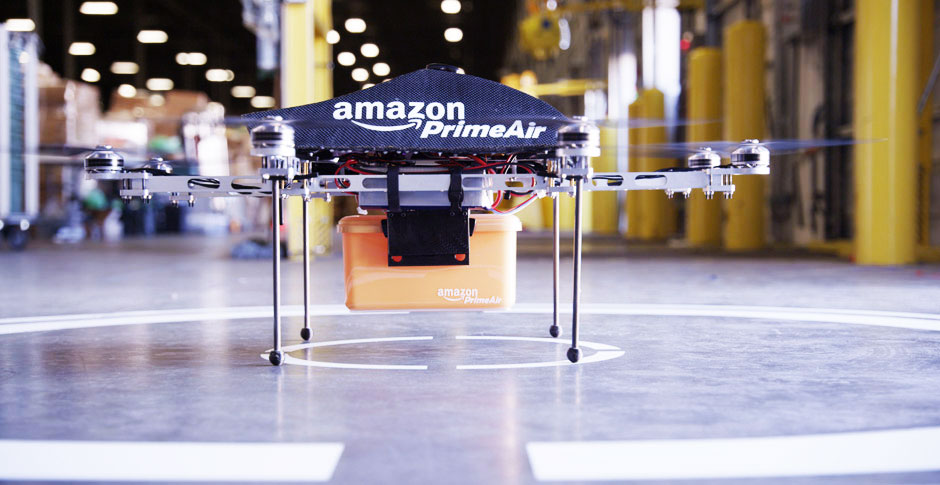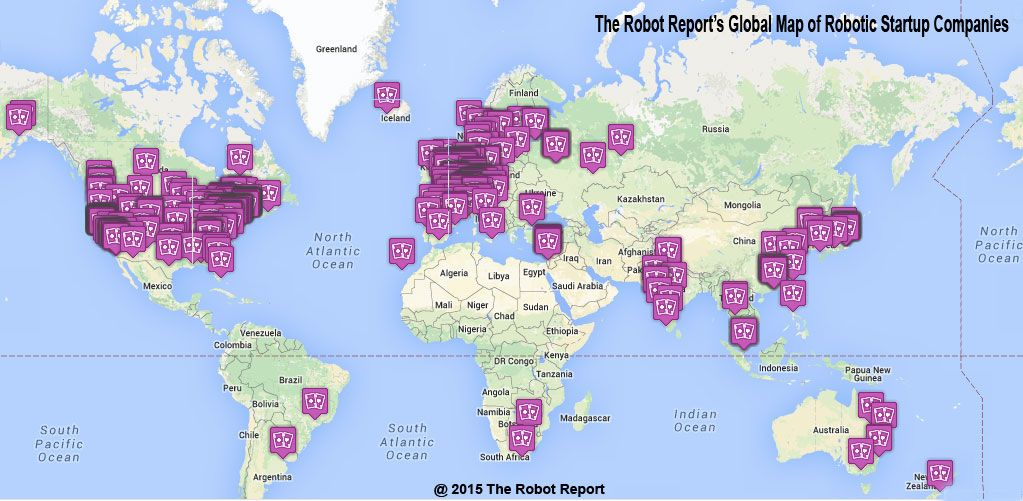
Robohub.org
As drone use flourishes, the FAA waivers, and Amazon is forced offshore
 Funding continues to flow to drone ventures worldwide even as news from the FAA suggests it will be many years before true autonomous flight will be allowed in the US. Meanwhile Amazon feels they must develop their drone plans offshore.
Funding continues to flow to drone ventures worldwide even as news from the FAA suggests it will be many years before true autonomous flight will be allowed in the US. Meanwhile Amazon feels they must develop their drone plans offshore.
DroneDeploy, a San Francisco startup, just received $9 million in Series A funding adding to the $2 million in seed funding it received last September and an undisclosed amount of initial funding from AngelPad in 2013. DroneDeploy makes a cloud-based user-friendly and simplified app to control and manage drones for outdoor landscape mapping and agricultural monitoring and delivers processed data back to the user so that they can make meaningful decisions based on that data.
3D Robotics received $50 million in February to accelerate the pace of innovation in the burgeoning new drone industry.

Across the world, businesses of all types are finding value in the use of drones and the data resulting from their flights. According to the Association for Unmanned Vehicle Systems (AUVSI), the UAV market is estimated at $11 billion, and is expected to grow to $140 billion over the next 10 years. Hundreds of new startups dot the globe and venture money is flowing liberally. Commercial use of drones up until recently has been banned by the US Federal Aviation Agency. However, with a series of waivers, the FAA has tacitly agreed to commercial use under certain limitations. The principle restraint is that the drone always be in sight of the operator. But this doesn’t work for large farms and companies with rapid delivery plans like Amazon.
Back in December 2013, Amazon CEO Jeff Bezos made a surprise announcement in a 60 Minutes interview with Charlie Rose wherein Bezos revealed a secret R&D project to fly packages directly to buyer doorsteps in 30 minutes. It wasn’t idle talk – Charlie and the 60 Minutes cameras actually saw a Prime Air drone sitting on a tabletop.
In February 2015, the FAA responded to a waiver request from Amazon by granting a waiver limiting Amazon’s drones to line of sight. They said that operators of commercial unmanned aircraft would need to see the drone with “unaided vision,” nor could the drones fly over people. Amazon’s request was for the FAA to allow Amazon to conduct outdoor trials at a special site in Washington State.
A revealing story by The Guardian, a UK newspaper, described a British Columbia site where Amazon’s roboticists and engineers are now developing their unmanned delivery service.
Amazon is testing its drone delivery service at a secret site in Canada, following repeated warnings by the e-commerce giant that it would go outside the US to bypass what it sees as the US federal government’s lethargic approach to the new technology.
The largest internet retailer in the world is keeping the location of its new test site closely guarded. What can be revealed is that the company’s formidable team of roboticists, software engineers, aeronautics experts and pioneers in remote sensing – including a former Nasa astronaut and the designer of the wingtip of the Boeing 787 – are now operating in British Columbia.
The end goal is to utilise what Amazon sees as a slice of virgin airspace – above 200ft, where most buildings end, and below 500ft, where general aviation begins. Into that aerial slice the company plans to pour highly autonomous drones of less than 55lbs, flying through corridors 10 miles or longer at 50mph and carrying payloads of up to 5lbs that account for 86% of all the company’s packages.
The company’s decision to set up camp in Canada, after frustration in its attempts to persuade US regulators to allow it to launch its drones in Washington state, takes Amazon’s quarrel with the federal government to a new level. Last week a senior Amazon executive appeared before a US Senate subcommittee and warned that there would be consequences if federal regulators continued to act as a drag on its ambitions to launch a drone delivery service called Prime Air.
What Paul Misener, the company’s vice-president for global public policy, did not tell senators was that at the very moment he appeared before them, Amazon drones were buzzing in the skies just north of the border.
In another part of the extensive Guardian story, the reporter compared other aviation authorities to the US:
Traditionally, the US has been at the vanguard of both tech and aviation innovation, but the approach of the the Federal Aviation Authority (FAA), a US regulatory body, has been markedly tentative so far compared with that of regulators in Canada and Europe.
The federal agency recently published its guidelines for commercial use of small drones. The new rules will take at least two years to come into effect, a delay which Amazon finds unacceptable.
The contrast between the relative rigidity of the FAA’s approach to drone testing and the relatively relaxed regulatory regime in Canada is startling. Under the Canadian system, Amazon has been granted a virtual carte blanche regarding its entire fleet of drones within its designated airspace, having gone through a licensing process that took just three weeks.
By comparison, it takes the FAA many months to grant approval. Sources familiar with the process told the Guardian the US regulator insists on an initial 23-page application, a review of 75 pages of further documentation and a four-hour presentation at FAA headquarters followed by a three-hour site visit, together with ongoing reporting and record-keeping obligations.
The US does have a complex airspace, but it’s no more complex than in Europe, where regulators do allow testing, and it’s certainly not complex beneath 500ft or in rural areas of Washington state where Amazon had planned to operate.
The numbers speak for themselves. The FAA has received more than 750 requests for outdoor drone testing licenses from American businesses, Amazon’s among them, but so far has granted just 48. Canada’s equivalent civil aviation authority, Transport Canada, released 1,672 commercial drone certificates last year alone.
The FAA has stated that at the present time it does not believe that drones can be flown safely under autonomous control, thereby insisting that humans must keep them in eyesight at all times. That doesn’t work for Prime Air, hence the serious ongoing lobbying effort by Amazon. This story will play out over time because Amazon isn’t the only company limited by the line of sight ruling. The question is whether the beneficiaries of the delay will be American consumers and businesses, or their offshore competitors.
If you liked this article, you may also be interested in:
- Commercial drone regulations: Canada vs. US
- How Canada handles beyond visual line-of-sight drone operations
- FAA regulations draw inspiration from Canada, but miss key aspect
- Amazon requests FAA permission to test delivery drones
- Commercial opportunities to create more than 100,000 manufacturing jobs when FAA opens airspace to UAS
See all the latest robotics news on Robohub, or sign up for our weekly newsletter.
tags: Amazon, c-Aerial, drone delivery, drone regulation, FAA regulations, Prime Air


